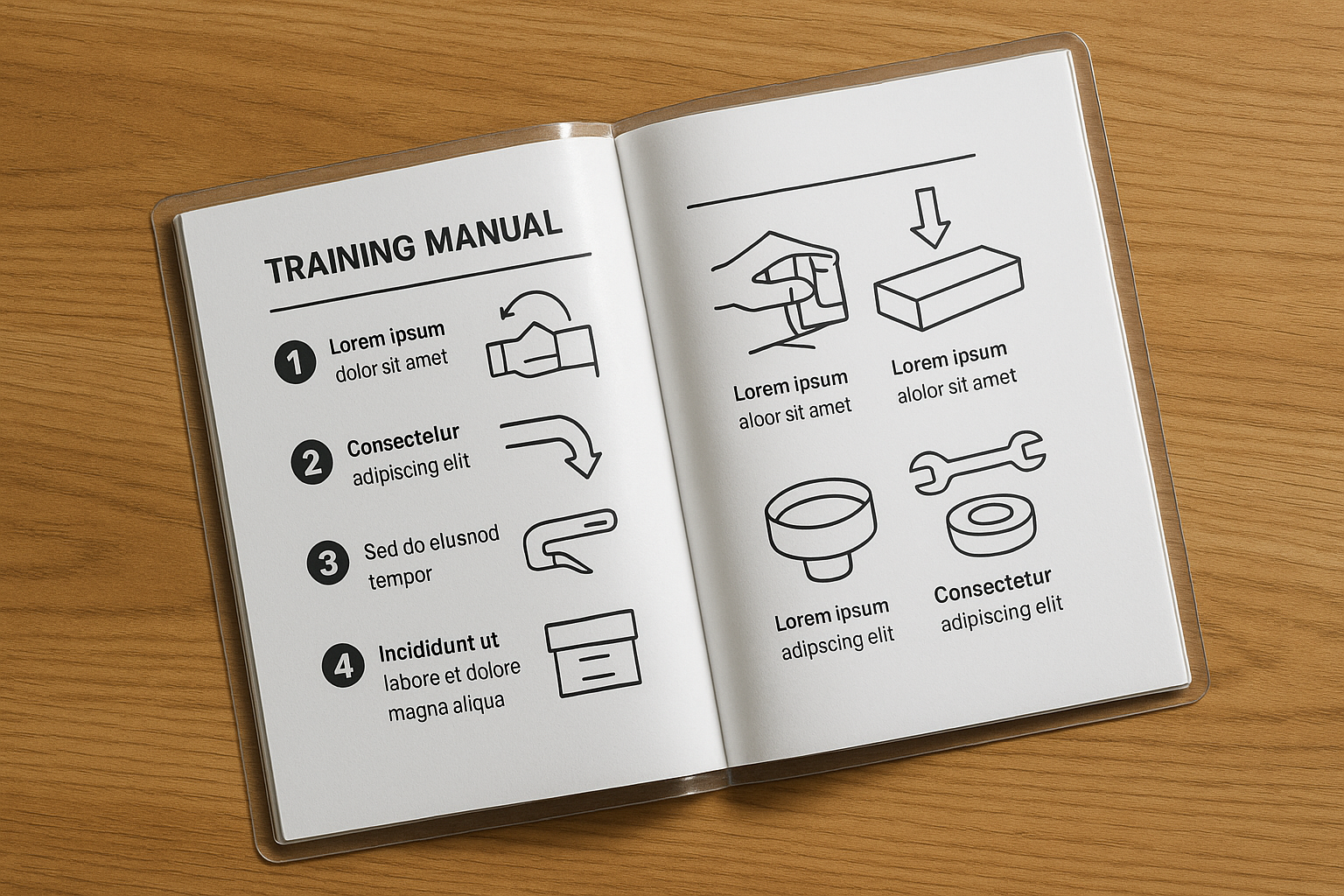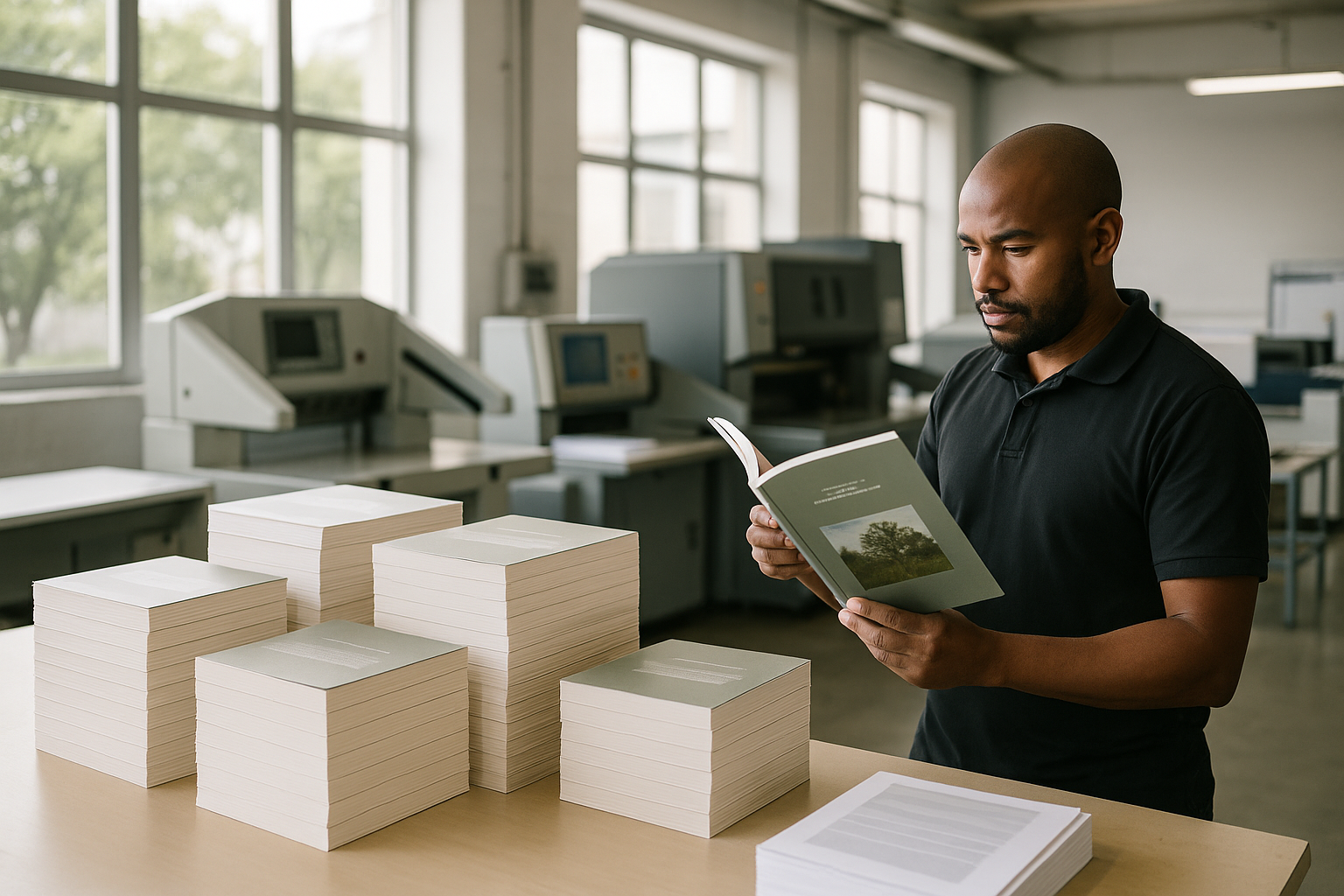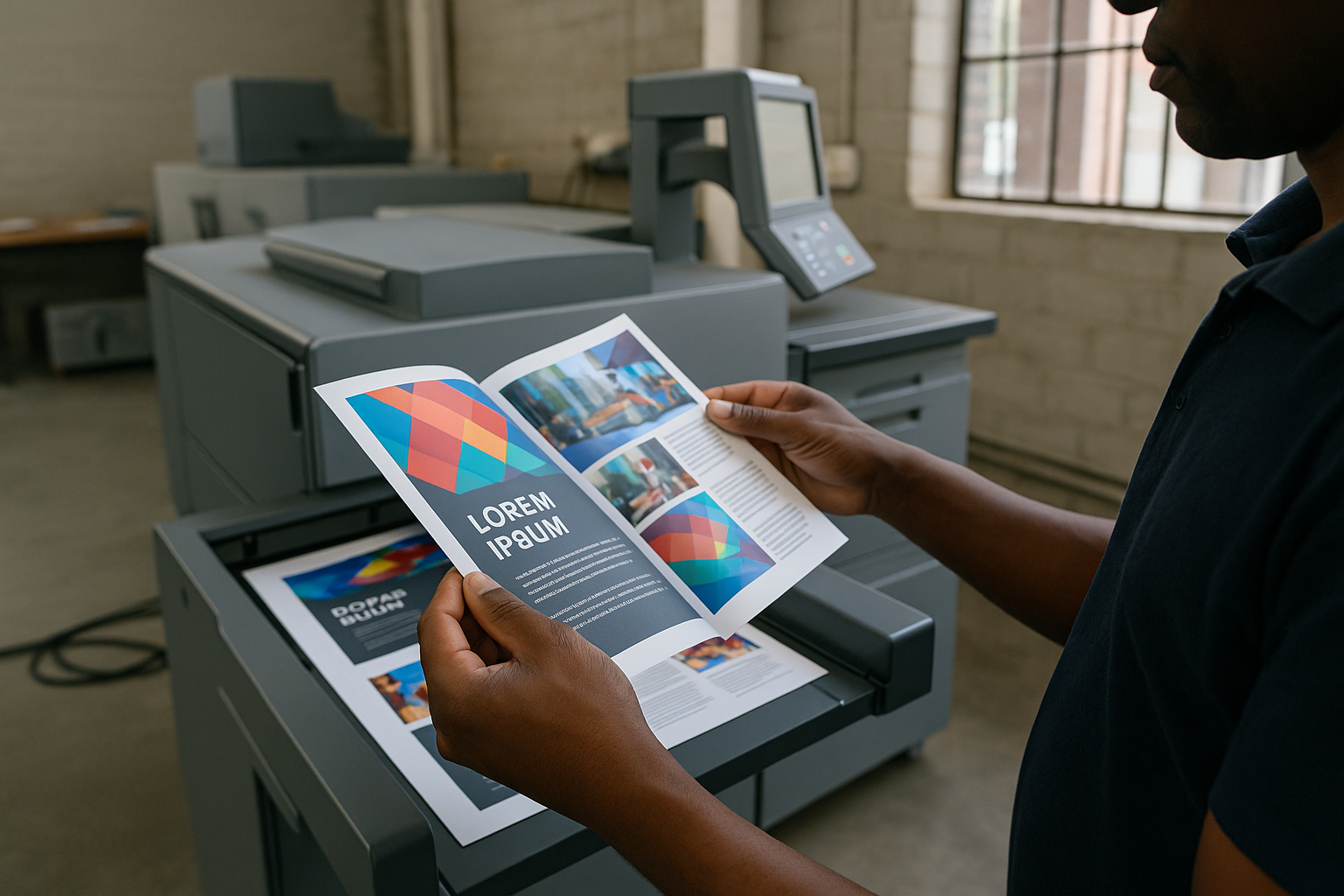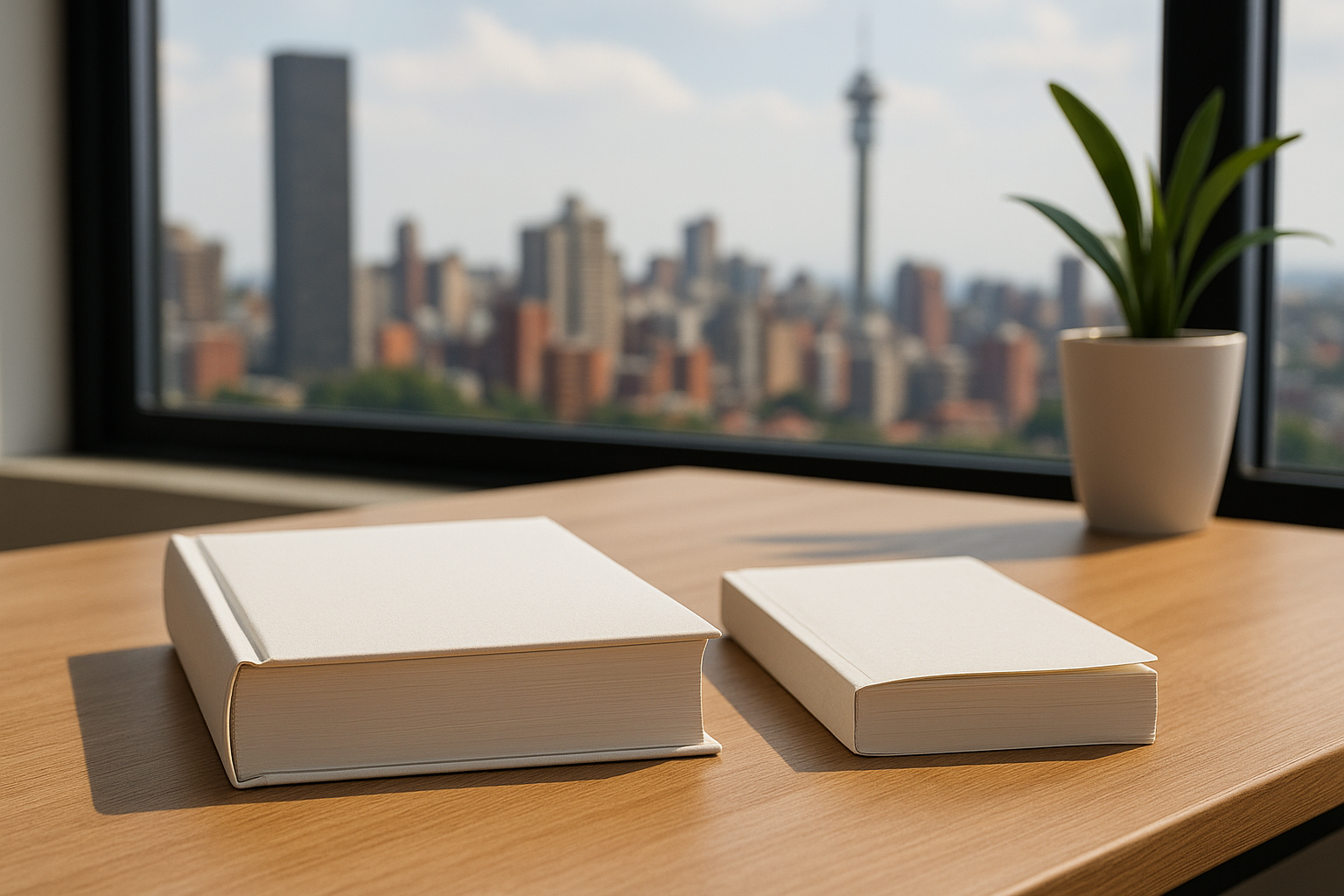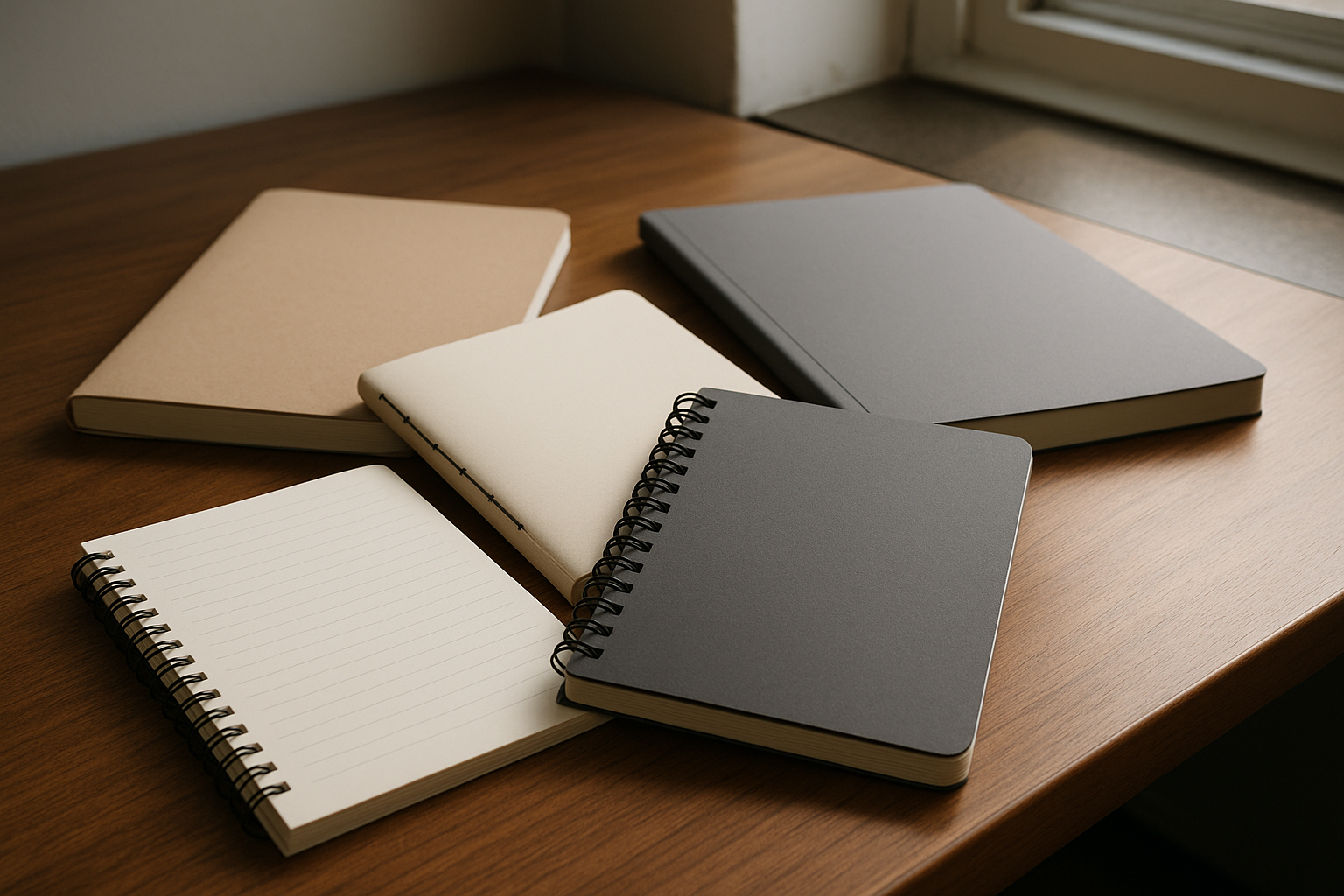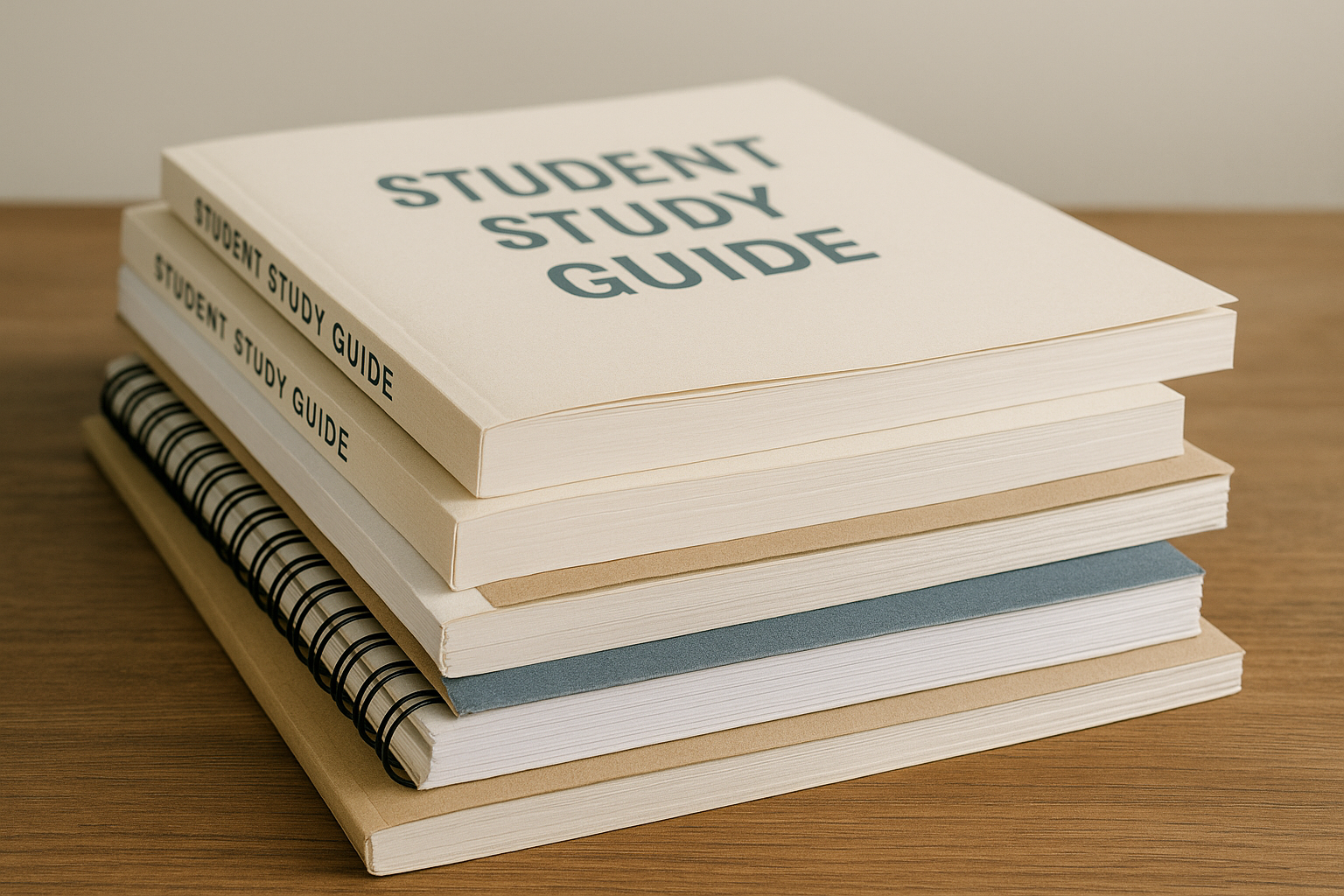Print training manuals are one of the most tangible tools you can give staff, trainers and learners — they last beyond a screen, travel with teams, and can be designed to actually get used rather than ignored.
How do I print training manuals that actually get used?
Start with the user: who will carry, reference and store the manual? To print training manuals that get used, match paper weight, binding and layout to the environment. For classroom and school use, choose robust stitch or perfect binding; for field teams consider ring binding or spiral binding so pages lie flat. Make the cover durable with a laminated or soft-touch finish if the manual will be handled daily. Use clear headings, consistent iconography and an accessible type size (generally 10–12pt for body text and 14–18pt for subheads).
In South Africa’s education and corporate sectors, bulk educational printing for schools and businesses must consider school term preparation and event schedules — print early for term starts or for conference dates. According to Statista, paper and print products remain a major part of learning resources in many regions, supporting retained learning through physical materials (According to Statista, 2021). Choosing a commercial printing partner experienced in educational printing, booklet printing and catalogue printing will make the difference between manuals that are used and manuals that are filed away.
What design and layout choices make training manuals easier to use?
Good layout reduces cognitive load and encourages reference. Use consistent margins, readable serif or sans-serif fonts, and a logical hierarchy of headings. White space and numbered steps make procedures scannable. Consider a two-column layout for dense information or call-out boxes for critical safety or compliance items.
Visuals are crucial: diagrams, annotated photos and flowcharts help the reader find answers quickly. Use colour sparingly to highlight sections and to create accordions or tabs in the printed format (e.g., coloured tabs on the edge). For training manuals printed for events and promotions or small business marketing materials, include a simple index and quick reference cheat-sheets at the back.
- Use headings every 2–3 paragraphs
- Number processes and checklists
- Include a one-page quick-start summary
Which paper, binding and finishes should I choose for longevity and cost?
Paper weight and binding are the primary determinants of perceived quality and durability. For classroom manuals and school textbook printing feel, 80–120gsm uncoated text stock is common; for manuals that must endure heavy handling, 120–170gsm text with a 250–350gsm cover works well. Binding choices include saddle stitch (cost-effective for short manuals), perfect binding (professional for thicker manuals), and spiral or ring binding (practical for hands-on use).
Finishes such as aqueous coating, matt or gloss lamination and soft-touch varnishes extend life and improve handling. If you’re printing for training across outdoor or industrial environments, consider waterproof or tear-resistant papers. Many commercial printers in South Africa offer custom print finishes and eco-friendly printing options to balance durability and sustainability.
How can I keep costs down when I print training manuals in bulk?
Bulk educational printing for schools and businesses reduces unit cost dramatically. Key tactics include standardising page counts across manuals, using common paper stocks for multiple titles, and opting for economical binding where appropriate. Schedule orders around print schedules to take advantage of litho runs when printers can fit your job into existing plates.
Compare litho and digital quotes: digital printing shines for short runs and print-on-demand while litho is typically cheaper for large quantities. Also examine distribution models — centralised delivery across South Africa with staged regional fulfilment can cut shipping costs. According to the Printing Industries of South Africa, consolidated bulk orders are a major efficiency driver for educational printers (According to Printing Industries of South Africa, 2020).
What’s the difference between litho and digital printing for manuals?
Litho (offset) printing uses plates and is cost-efficient at higher volumes, offering consistent colour and a wide range of stock choices. Digital printing requires no plates and is faster for shorter runs, enabling economical print-on-demand and easy variable-data printing (for personalised manuals or version control). Both methods are used across commercial printing, brochure printing, booklet printing and textbook printing.
| Feature | Litho | Digital |
| Best for | High-volume runs | Short runs, variable data |
| Setup | Requires plates | No plates, instant setup |
| Unit cost | Lower at scale | Higher for very large runs |
Choose based on your print run size, turnaround needs and whether you require variable content or custom finishes.
How should I plan lead times and fast turnaround printing in South Africa?
Fast turnaround printing is crucial when preparing materials for a new school term, a training rollout or an event. Book your print schedule early, especially in peak seasons such as the start of the academic year. Discuss production timelines with your printer and plan for proofing and any revisions.
Typical lead times vary: digital short runs can ship within 3 to 5 working days while litho runs may require 5–12 business days including finishing. For print delivery across South Africa, choose a printer with nationwide logistics and express shipping options to meet school term preparation and event deadlines.
Can custom print finishes and eco-friendly options coexist?
Yes — many printers now offer eco-friendly printing options that still include premium finishes. Recycled stocks, FSC-certified papers and eco inks reduce environmental impact. For covers, aqueous and matte finishes can be more eco-friendly than solvent-based laminates, and certain compostable coatings are becoming more common.
If sustainability is a priority for your organisation or school, request certified stocks and an environmental statement from your commercial printer. Balancing eco-credentials with durability is often a simple matter of choosing the right stock and finish combination.
Can I combine bulk educational printing for schools with print-on-demand strategies?
Yes. Use a hybrid model: print core quantities in bulk for steady needs such as textbooks and foundational training manuals, and keep optional or frequently-updated modules on print-on-demand. This reduces warehousing costs and prevents obsolescence when policies or training content changes.
For school textbook printing and classroom materials, print the parts of the curriculum that are stable in bulk, and use digital print-on-demand for supplements, handbooks or site-specific checklists. According to UNESCO, physical learning materials continue to play a central role in educational outcomes in many countries (According to UNESCO, 2019).
How do I prepare files and proofs to avoid costly reprints?
Provide print-ready PDFs with embedded fonts, CMYK colour profiles and crop/bleed marks. Set correct page size and include 3–5mm bleed. Use a consistent naming convention and supply a sample or mock-up for layout confirmation. Request a hard proof for colour-critical jobs or a digital proof for quick checks. Keep version control clear to prevent accidental reprints of outdated content.
Many print providers in the booklet printing and custom publishing sectors will provide a preflight check and advise on whether elements such as thin lines, low-resolution images, or RGB files need correction. This saves both time and cost when you need fast turnaround printing or distribution across multiple South Africa locations.
How should I choose a commercial printer for training manual printing?
Evaluate printers on experience with similar projects (education printing, school textbook printing, brochure printing services, booklet printing), production capabilities (litho and digital printing, binding options), lead times and logistics. Request samples that match the finish and binding you need. Ask about eco-friendly options and whether they offer custom print finishes.
Consider these selection criteria:
- Relevant portfolio and references
- Quality of sample finishes and colour consistency
- Transparent pricing and turnaround commitments
- Distribution capacity across South Africa
For a starting point, view specialised training manual and education printing services offered by established providers. For example, you can compare educational printing and training manual services from reputable suppliers like the ones listed at these internal resources: training manual printing, booklet printing, brochure printing services, and education printing.
What distribution and delivery options exist across South Africa?
Printers typically offer consolidated pallet shipments, regional drop-shipping, and individual parcel delivery. For schools and corporate rollouts, consider centralised warehousing with scheduled regional dispatches to reduce per-item freight costs. Express courier services are available for last-minute needs but are more expensive.
Discuss insurance for high-value shipments and ask about proof-of-delivery and tracking to ensure materials reach remote campuses or branch offices in time. A good commercial printer will manage logistics for campaign-based deliveries, event-ready shipments and ongoing supplies for schools across South Africa.
How do I measure whether printed training manuals are actually used?
Usage can be measured through direct feedback, checklists, and integrating printed materials into assessment and onboarding processes. Include quick surveys or QR codes that link to short feedback forms, or design take-away checklists that must be signed and returned. Track reorders and replacement rates as indirect indicators of use and wear.
Combine printed materials with short instructor-led assessments and digital follow-ups to capture learning outcomes. This hybrid approach — print materials supported by digital tracking — provides robust insight into whether your training manuals are being read, referenced and retained.
Final Checklist Before You Press Print
Before you commit, make sure you’ve covered the essentials:
- Confirm final content and version control
- Prepare print-ready PDFs with bleed and embedded fonts
- Choose paper, binding, and finishes based on your use case
- Decide between litho and digital depending on volume and turnaround
- Plan distribution and delivery across South Africa
- Request proofs and sample finishes
Printing training manuals that last, get read, and actually get used is about combining smart design, the right materials, effective print technology, and reliable distribution. Whether it’s school textbook printing, booklet printing for workshops, or commercial printing for staff handbooks, careful planning saves money and improves uptake.
For expert guidance, partner with Print It ZA—South Africa’s leading choice for educational and commercial printing. From catalogues and newsletters to business cards and textbooks, Print It ZA helps schools, publishers, and businesses keep their materials consistent, professional, and on-brand.
Print It ZA we print Training Manuals BEST!
Contact us today for a Free Quote and Speedy service.

